
John Price rests his hand on a marker he placed on his land in remembrance of the Shawnee people who lived at Apple Creek from 1790 to 1825. The marker is located on an undocumented Shawnee gravesite on Price's property.
Jasmine Jones
Near the village of Old Appleton, Mo., an area boasting a population of 72, there is a creek: Apple Creek. In the bend of that bluff-lined waterway, there are 100 acres of hilly land. It is private land; some of it is used to farm, some of it is used to build homes. No matter what the land is used for, it all tells a story: the story of the Shawnee people. Although their time was brief in Apple Creek, they were integral in shaping the history of Cape Girardeau County, and later, the state of Missouri.
Some of the current property owners are working to preserve the history of the Shawnee village at Apple Creek. Mary Jane Buchheit is one of these property owners. In 1936, Mary Jane’s father, Gilbert Amschler, purchased all 100 acres in the bend of Apple Creek. Growing up on the property, Mary Jane recalls finding arrowheads constantly, and that at one point, the family had three cigar boxes full of them.
Local historian Lawrence Buchheit says he’s been interested in the history of Apple Creek and stories of the Shawnee people since he was a child. Now, he is working to preserve it alongside Apple Creek landowners like John Price. Price purchased his property within Apple Creek because of its interesting history and his friendship with Shawnee member and language specialist George Blanchard. Together, they’ve worked to uncover as much as they can about the area’s history and those who have lived there.
“What does history mean if you don’t put it out, so people can learn and hear this and see it?” Lawrence says. “Let the people know what’s happened. … Missouri has got started through a lot of the events that happened right here.”
Local historian Lawrence Buchheit holds open a 1969 hand-drawn map of Apple Creek and locations of the Shawnee people's village along it. Buchheit and landowner John Price have used the map to help locate important sites in the area.
Jasmine Jones
The story begins
More than 200 years ago, the Shawnee people called the bend of Apple Creek home. According to the 2005 thesis “The Shawnee and Delaware Indians in Early Missouri, 1787-1832” by Sarah Haskins, the Delaware and Shawnee left Ohio in 1787. Both tribes eventually settled in land around Apple Creek, land gifted to them by the Spanish in 1793. According to Haskins’ research, the Spanish thought the tribes could serve as a buffer between the Osage tribe to the West and the approaching Americans to the East.
In Haskins’ research, Shawnee village life is described as vibrant, with approximately 1,200 Absentee Shawnee and 600 Delaware living in the area. Being along the Mississippi River, the Shawnee were involved heavily in the fur trade, with a plentiful game supply and fertile karst soil for farming. Haskins writes that the Apple Creek settlements were the “largest and most established” in the Cape Girardeau area; the settlements were also the most visited by travelers during this time period.
In the Lewis and Clark Expedition journals, Lewis describes the location of the Apple Creek tribe in his Nov. 25, 1803, entry. He writes, “On this stream, about seven miles from its mouth, is a settlement of Shawnees, which more than any other in this quarter, deserves the name of a village.”
Hunt for a historic spot
One story that interested current Apple Creek landowners was a story passed down of “witchcraft trials” that took place in the Shawnee village at Apple Creek where upwards of 50 women were supposedly tried, killed by tomahawk and burned, as documented in the 1908 book “A History of Missouri: Vol. 1,” by Louis Houck. In the text, according to an account in “Lesieur’s Letter to the Missouri ‘Republic,’” it is written that the Shawnee and Delaware people “became possessed with the infatuation that witchcraft was being practiced among them, and no less than 50 women suffered cruel death by the torch within 12 months [in 1808-09].”
Blanchard has ancestors who lived at Apple Creek, and even before he knew the settlement there had existed, he heard the story of Shawnee tribes “trying to get rid of witchcraft and accusing people.”
Price says some Shawnee members have told him they believe the burnings were an imitation of the Salem Witch Trials of the 1600s, a way to “fit in.” Although no one can be certain why the burnings occurred, Blanchard says the story has been passed down through generations.
Price and Lawrence attempted to locate the burning site from the witchcraft trials using these stories, historical texts and a hand-drawn 1969 map by local contractor J.W. Gerhardt. On the old map, the “burn site” was labeled with a circle within a circle — a common symbol for contractors that indicates a hole. Price and Lawrence found a sinkhole on Mary Jane’s son Nick Buchheit’s property that seemed to match the location of the symbol.
They also referenced Houck’s Missouri history volume, which describes how three tribe members were found guilty of murder near Cape Girardeau in 1808-09 and then “led out into the thick woods and tomahawked …”
Price asked Blanchard about the practice of tomahawking, and he said tomahawks used to kill an individual would most likely be left at the site of death and thrown into the woods. When Nick heard this, he says the hairs on the back of his neck stood up.
“[Price and Lawrence] showed me this sinkhole that they thought [the burnings] happened at. I said [to them], ‘I have a tomahawk that I picked up just a few yards from that site.’ … To me, that’s just further evidence that it’s the correct location of [the burn site],” Nick says.
Price, Lawrence and Nick put a stone marker to indicate where the burn site is. They also put a similar stone marker where they believe a Shawnee gravesite is. They had the Shawnee members who have visited the Apple Creek site sign their names on the back of the stone. Both the gravesite and burnsite are technically undocumented.
“[The burnings] are just part of [the Shawnee] story, though. It’s not their story; it’s part of their story. That just happened for one year, when they lived here for probably 50 years. … The bigger story … to me, is what their whole story had been,” Nick says.
A rock that Nick Buchhiet believes is a tomahawk sits on a porch. Nick Buchheit found the rock yards from the site they believe the witchcraft trials took place in 1808-09.
Jasmine Jones
Shawnee life and customs
It is often the sensationalized events that are remembered, but the whole story is told in the ordinary moments and daily tasks. When discussing his ancestors’ life, Blanchard says it is likely the tribe made wesko peme, a Shawnee traditional dried corn, that, once boiled, regains its shape and can be cooked with meat. When he was a child growing up in Little Axe, Okla., Blanchard’s family harvested corn, cooked it on rollers and dried it in the sun. It is a tradition that likely goes back to his ancestors at Apple Creek.
Blanchard has visited the Apple Creek site at least six times, while he served as the Absentee Shawnee governor from 2009 to 2013.
While visiting the site, Blanchard says Price and Lawrence led the group of Shawnee elders around the grounds, pointing out important sites as they walked. Blanchard says one of the Shawnee traditions when visiting ancestors’ gravesites is to place a piece of tobacco on the ground.
Blanchard says the Shawnee people also restrain from eating or drinking after dark while at a site like Apple Creek. If they do eat, he says they’ll leave a piece of food on the ground to “feed the spirit of the elders that’s gone.” Still, the best part of visiting the land for Blanchard was “seeing where his people have been.” Now, as a language specialist for the Shawnee Tribe of Oklahoma, Blanchard is ensuring his people’s language lives on. He is one of few people fluent in Shawnee who started speaking it as a first language.
John Price stands in front of the site he believes the "witchcraft trials" took place at the Shawnee village in 1808-09. Price has used historical documents, maps and evidence to locate the site.
Jasmine Jones
An emptying village
Throughout the Shawnee people’s time in Apple Creek, the American westward expansion kept pushing further towards the Pacific Coast, and more non-Shawnee people began settling on Shawnee land. According to Haskins’ research, Louis Lorimier, credited with establishing Cape Girardeau, communicated often with the settlement at Apple Creek. Lorimier notified government officials and sent multiple letters exposing the issue of America’s westward expansion into Shawnee land.
The War of 1812 shifted the tensions between groups in the area further. Haskins’ research explains the population in Missouri grew substantially, as more and more private land claims were sorted out. Then, in 1821, Missouri officially became the 24th state in the United States.
By 1825, the Shawnee had ceded their land in Apple Creek for 50 square miles in Southwestern Missouri, according to Haskins’ research.
Blanchard says there are three branches of Shawnee: the Eastern Shawnee, the Loyal Shawnee and the Absentee Shawnee, although they all speak a language that is basically the same. Blanchard’s ancestors are mostly from the Absentee Shawnee, whom he says got their name from their brief excursion to Mexico in search of land in the 1850s. The Absentee Shawnee Tribe website also states they received the “Absentee” distinction because their groups were not present at the signing of the 1854 treaty for a Kansas Reservation, and instead traveled to Mexico and Oklahoma.
Continuous discovery
Price, Lawrence, Nick and Mary Jane are adamant about preserving the history of Apple Creek.
“I’m trying to get this history straight and preserve it and keep it like it should be. It’s not to be misused or mistreated,” Price says.
Price has scavenged the 100 acres of land on his hands and knees, looking for artifacts from the Shawnee. He has also attempted to create a map to scale based on Gerhardt’s hand-drawn map. Both Price and Lawrence have visited the Absentee Shawnee tribe in Oklahoma to talk to the people and gather stories of their ancestors firsthand. Lawrence says they believe in getting the story from the Shawnee people and telling history in the most truthful way.
“Once you study the Native American culture, you can’t help but wonder, ‘Why didn’t we keep them here and learn from them?’ … Why didn’t we pick up pieces and study from them and learn from them: how to live, how to crop, how to grow things, how to raise a family? As far as I’m concerned, they knew more back then than we know now,” Lawrence says.
But for Blanchard, Apple Creek is more than someone else’s history. It is his history, his people’s history.
“After everything was over, I realized we were there,” Blanchard says. “But it’s been quite an adventure thinking about how we survived in that area during that time.”


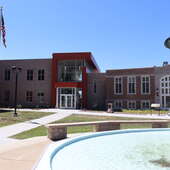 Local News 5/11/24Cape Girardeau Parks and Recreation to operate Visit Cape starting at the end of June 302The City of Cape Girardeau has negotiated the terms of its contract with the Cape Girardeau Area Chamber of Commerce to operate the Convention and Visitor’s Bureau/Visit Cape. The Parks and Recreation Department will now operate the bureau starting...
Local News 5/11/24Cape Girardeau Parks and Recreation to operate Visit Cape starting at the end of June 302The City of Cape Girardeau has negotiated the terms of its contract with the Cape Girardeau Area Chamber of Commerce to operate the Convention and Visitor’s Bureau/Visit Cape. The Parks and Recreation Department will now operate the bureau starting...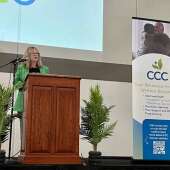 Local News 5/11/24CCC unveils new branding during 50-year anniversary celebratory luncheonsCommunity Counseling Center celebrated its 50th anniversary with a commemorative luncheon on Friday, May 10, at the Jackson Civic Center, along with an unveiling of the organization’s rebranding. CCC held luncheons throughout the week at each of the...
Local News 5/11/24CCC unveils new branding during 50-year anniversary celebratory luncheonsCommunity Counseling Center celebrated its 50th anniversary with a commemorative luncheon on Friday, May 10, at the Jackson Civic Center, along with an unveiling of the organization’s rebranding. CCC held luncheons throughout the week at each of the... Local News 5/11/24Cape Girardeau County election officials, public view voting machine demonstrations3Three election equipment companies made their pitches to both members of the public and Cape Girardeau County's election team as to why they should choose their voting machines for upcoming elections.
Local News 5/11/24Cape Girardeau County election officials, public view voting machine demonstrations3Three election equipment companies made their pitches to both members of the public and Cape Girardeau County's election team as to why they should choose their voting machines for upcoming elections.
 Local News 5/10/24Judge denies request for cameras in the courtroom to cover coroner's criminal hearing1A judge has denied a request to allow cameras or recording equipment in the courtroom as the Cape Girardeau County coroner faces criminal charges. KFVS anchor and media coordinator for the 32nd Circuit Kathy Sweeney had asked in March, per the rules...
Local News 5/10/24Judge denies request for cameras in the courtroom to cover coroner's criminal hearing1A judge has denied a request to allow cameras or recording equipment in the courtroom as the Cape Girardeau County coroner faces criminal charges. KFVS anchor and media coordinator for the 32nd Circuit Kathy Sweeney had asked in March, per the rules... Local News 5/10/24Facing a nationwide trend, SEMO takes proactive steps against looming budget shortfalls14Amid universities around the country facing financial problems, largely impacted by lower enrollment numbers, Southeast Missouri State University is working to avoid potential budget issues that could arise in the near future. According to...
Local News 5/10/24Facing a nationwide trend, SEMO takes proactive steps against looming budget shortfalls14Amid universities around the country facing financial problems, largely impacted by lower enrollment numbers, Southeast Missouri State University is working to avoid potential budget issues that could arise in the near future. According to... Local News 5/10/24Police investigation yields arrest of Illinois man, alleged meth seizureA Tamms, Illinois, man faces a Class C felony relating to drug delivery; a Class D felony of unlawful possession of a firearm and a Class E felony of unlawful use of a weapon following an investigation that resulted in two cases over a two-day...
Local News 5/10/24Police investigation yields arrest of Illinois man, alleged meth seizureA Tamms, Illinois, man faces a Class C felony relating to drug delivery; a Class D felony of unlawful possession of a firearm and a Class E felony of unlawful use of a weapon following an investigation that resulted in two cases over a two-day...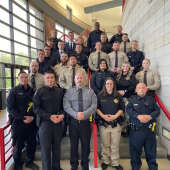 Local News 5/10/24SEMO's Law Enforcement Academy graduates 28 officersMore than two dozen Southeast Missouri State University Law Enforcement Academy graduates were honored with a ceremony Thursday, May 9, at the Show Me Center. Of the 28 graduates, 27 are taking jobs in Southeast Missouri, and one will begin their...
Local News 5/10/24SEMO's Law Enforcement Academy graduates 28 officersMore than two dozen Southeast Missouri State University Law Enforcement Academy graduates were honored with a ceremony Thursday, May 9, at the Show Me Center. Of the 28 graduates, 27 are taking jobs in Southeast Missouri, and one will begin their...




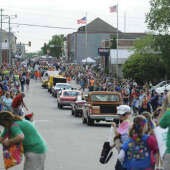
 Local News 5/10/24Cape Girardeau man faces multiple counts of sexual abuse against child5Steven Brown, 32, of Cape Girardeau is being held in Cape Girardeau County jail in lieu of a $250,000 bond while he faces three counts of first-degree sodomy or attempted sodomy on a child less than 12 years old; one count of second-degree child...
Local News 5/10/24Cape Girardeau man faces multiple counts of sexual abuse against child5Steven Brown, 32, of Cape Girardeau is being held in Cape Girardeau County jail in lieu of a $250,000 bond while he faces three counts of first-degree sodomy or attempted sodomy on a child less than 12 years old; one count of second-degree child...

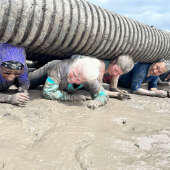 Local News 5/9/24Deceased Cape teacher serves as motivation for Tough Mudder competitor1Tough Mudder is a hardcore obstacle course designed to test participants’ all-around strength, stamina and mental grit, and runners must be at least 14 years old. Mildred Wilson has no problem meeting the criteria. Wilson, 85, was a spry 80 when she...
Local News 5/9/24Deceased Cape teacher serves as motivation for Tough Mudder competitor1Tough Mudder is a hardcore obstacle course designed to test participants’ all-around strength, stamina and mental grit, and runners must be at least 14 years old. Mildred Wilson has no problem meeting the criteria. Wilson, 85, was a spry 80 when she... Local News 5/9/24City of Cape signs lease agreement for police substation on Good Hope10A lease agreement between the City of Cape Girardeau and not-for-profit organization Partners for Good Hope for a police substation at 629 Good Hope St. was approved by the City Council on Monday, May 6. According to the council’s agenda report, the...
Local News 5/9/24City of Cape signs lease agreement for police substation on Good Hope10A lease agreement between the City of Cape Girardeau and not-for-profit organization Partners for Good Hope for a police substation at 629 Good Hope St. was approved by the City Council on Monday, May 6. According to the council’s agenda report, the... Local News 5/9/24Safe Harbor Animal Sanctuary to hold ground-breaking ceremony ThursdaySafe Harbor Animal Sanctuary will hold a groundbreaking ceremony for its new facility Thursday, May 9. The event will be at 10 a.m. at the organization’s location, 185 Cree Lane in Jackson. Plans call for the facility to be complete by January. Safe...
Local News 5/9/24Safe Harbor Animal Sanctuary to hold ground-breaking ceremony ThursdaySafe Harbor Animal Sanctuary will hold a groundbreaking ceremony for its new facility Thursday, May 9. The event will be at 10 a.m. at the organization’s location, 185 Cree Lane in Jackson. Plans call for the facility to be complete by January. Safe... Local News 5/9/24Kiss in gas station parking lot leads to felony weapons charge, documents say10A Cape Girardeau man faces felony charges after police say he used a gun to shatter a victim’s driver’s-side car window. Adam Childers, 37, faces charges of second-degree property damage and unlawful use of a weapon (exhibiting), which is considered...
Local News 5/9/24Kiss in gas station parking lot leads to felony weapons charge, documents say10A Cape Girardeau man faces felony charges after police say he used a gun to shatter a victim’s driver’s-side car window. Adam Childers, 37, faces charges of second-degree property damage and unlawful use of a weapon (exhibiting), which is considered... Local News 5/9/24Cape woman faces Class B felony after allegedly firing weapon during dispute with neighbor4Kylena Fleming, 37, of Cape Girardeau is being held on a $150,000 cash-only bond after police say she fired two bullets toward a victim and then tried to evade officers. Fleming was charged with unlawful use of a weapon, a Class B felony. ...
Local News 5/9/24Cape woman faces Class B felony after allegedly firing weapon during dispute with neighbor4Kylena Fleming, 37, of Cape Girardeau is being held on a $150,000 cash-only bond after police say she fired two bullets toward a victim and then tried to evade officers. Fleming was charged with unlawful use of a weapon, a Class B felony. ...
 Local News 5/8/24Taylor Swift's latest album is resonating with local 'Swifites'It has been almost three weeks since Taylor Swift released her newest album, “The Tortured Poets Department”, on April 19. According to www.billboard.com, the album was streamed over 1.76 billion times worldwide in its first week, breaking the...
Local News 5/8/24Taylor Swift's latest album is resonating with local 'Swifites'It has been almost three weeks since Taylor Swift released her newest album, “The Tortured Poets Department”, on April 19. According to www.billboard.com, the album was streamed over 1.76 billion times worldwide in its first week, breaking the...

 Most read 5/7/24Cape Girardeau man arrested after allegedly hiding in attic while surrounded by policeA Cape Girardeau man is in jail on two $10,000 bonds after police say the man barricaded himself in an attic for more than an hour while surrounded by police. Jason S. Jones Sr., 44, was charged with the Class A misdemeanor of resisting/interfering...
Most read 5/7/24Cape Girardeau man arrested after allegedly hiding in attic while surrounded by policeA Cape Girardeau man is in jail on two $10,000 bonds after police say the man barricaded himself in an attic for more than an hour while surrounded by police. Jason S. Jones Sr., 44, was charged with the Class A misdemeanor of resisting/interfering...




